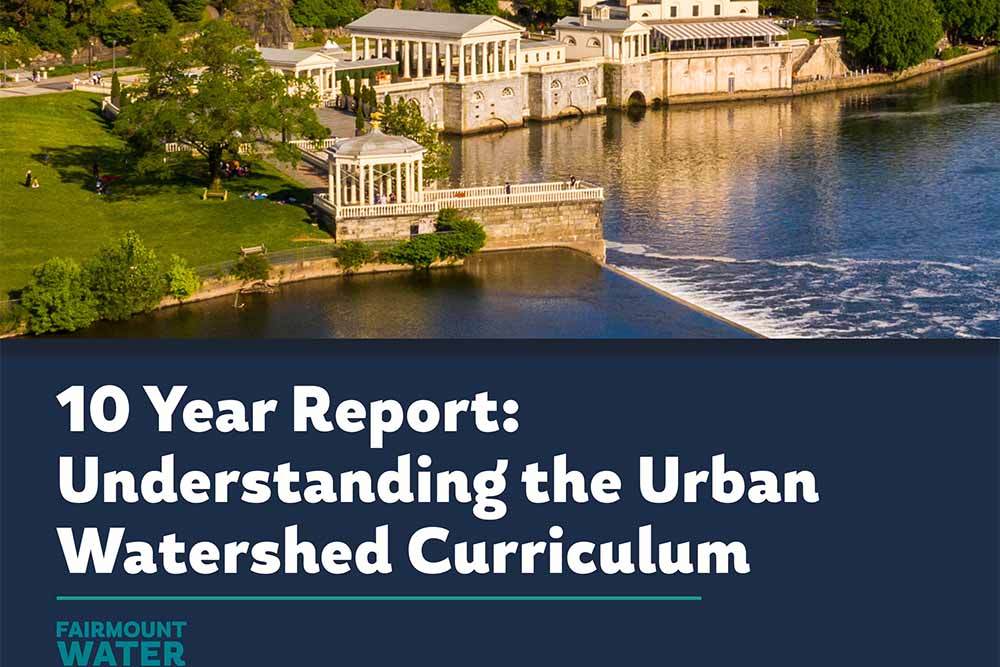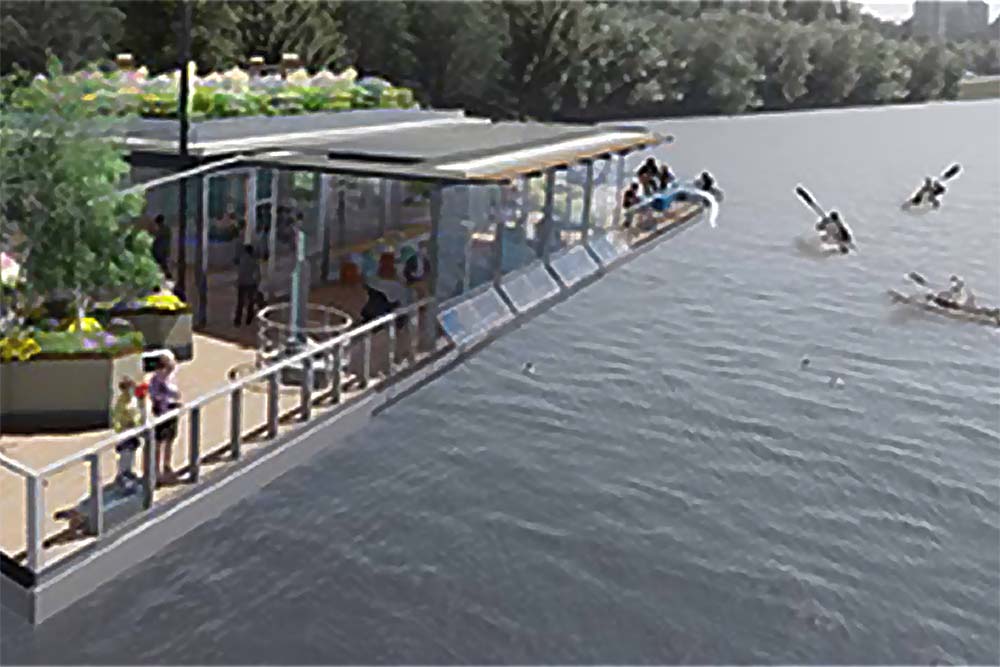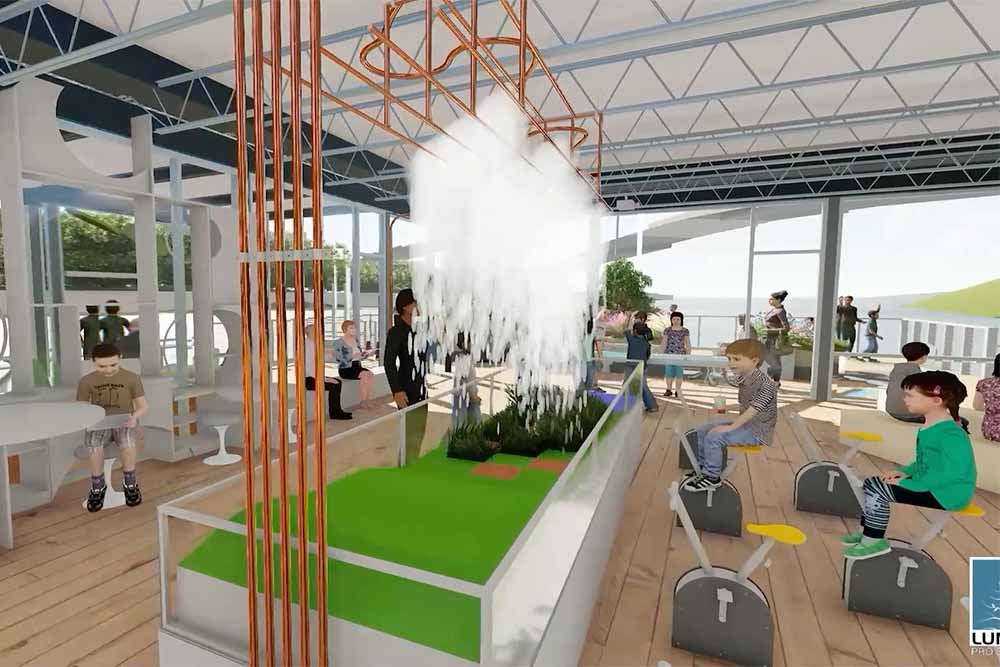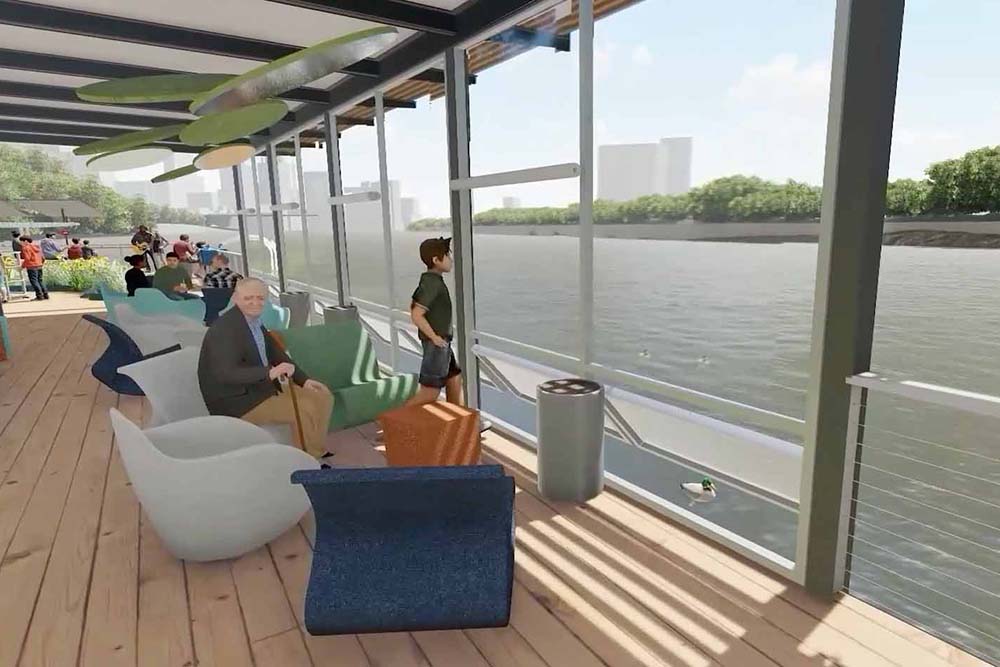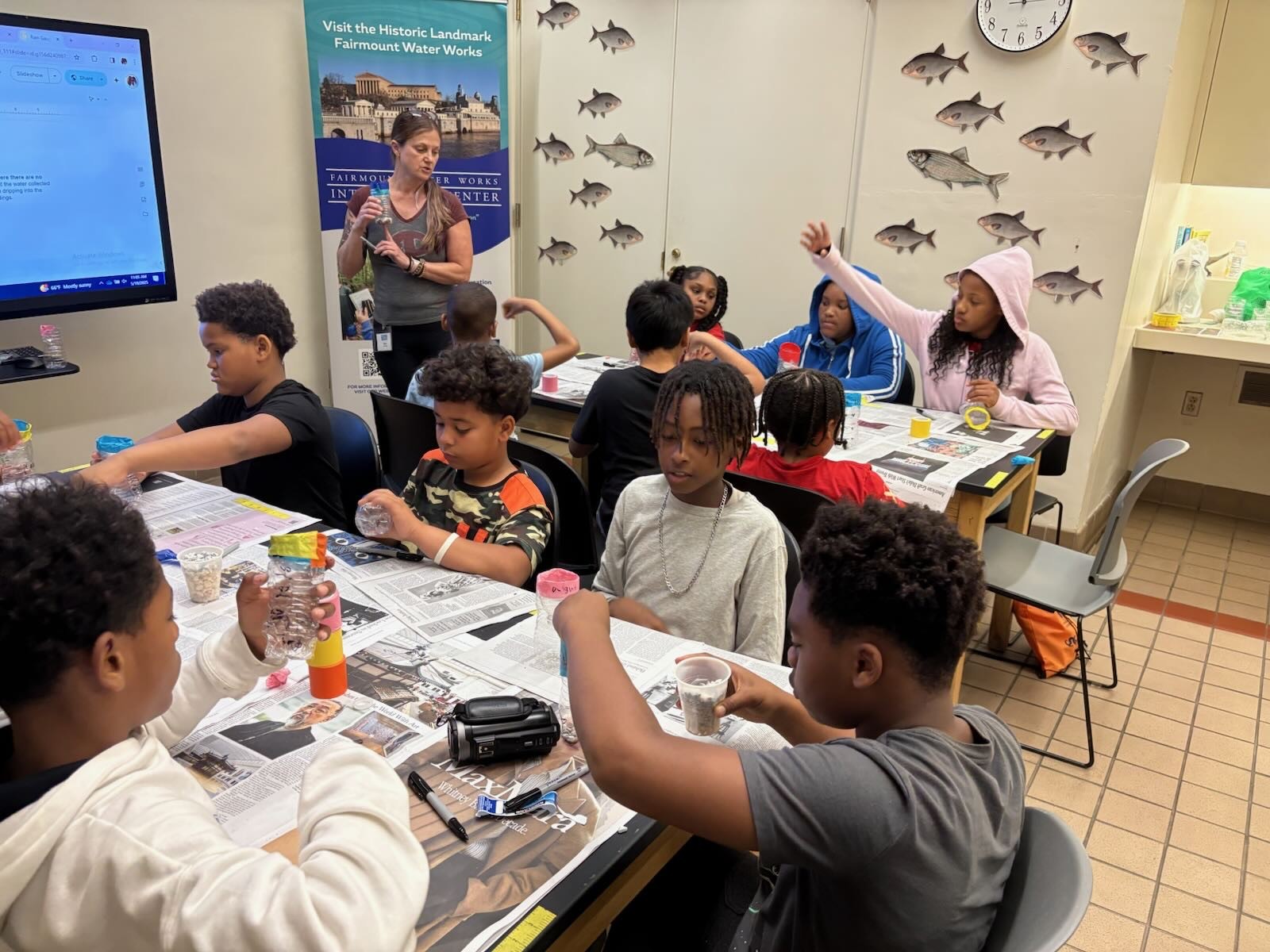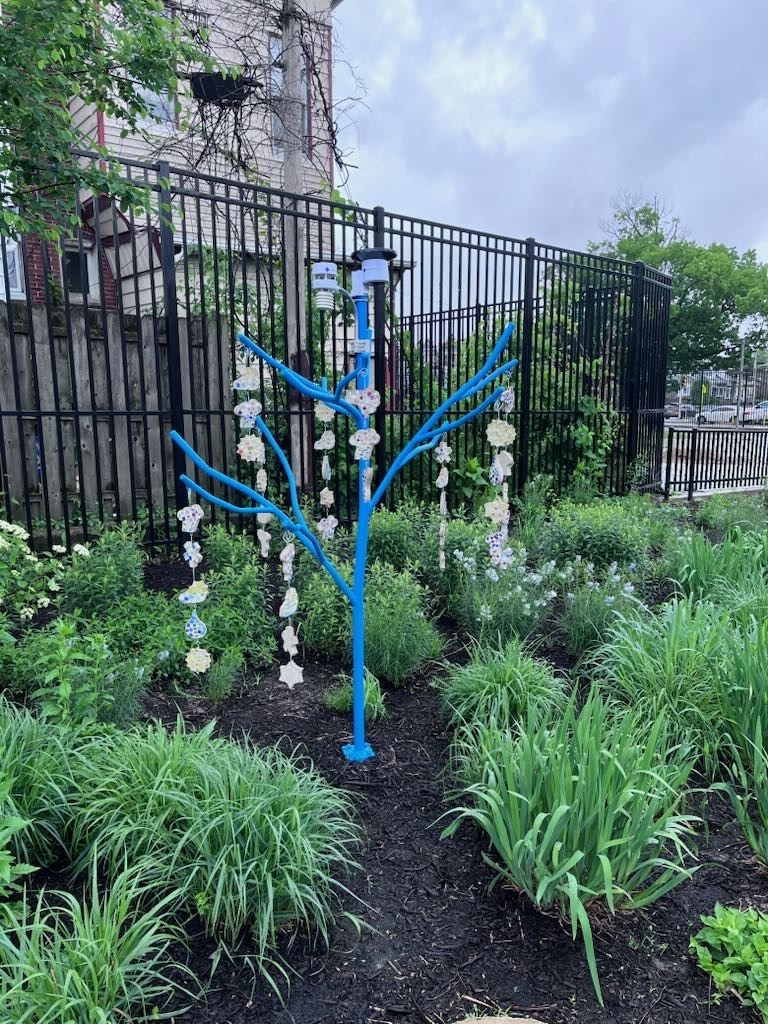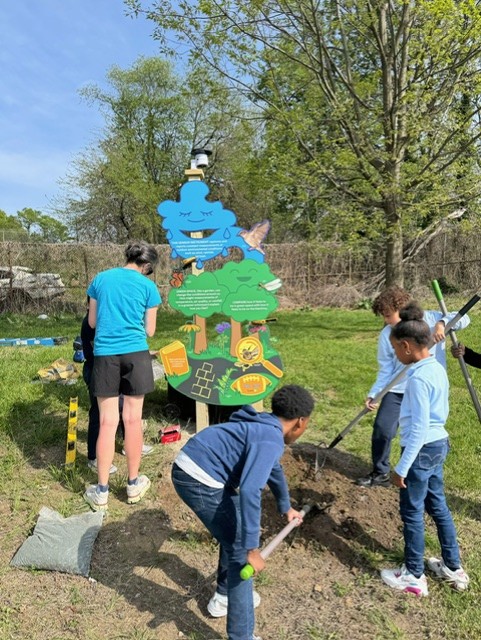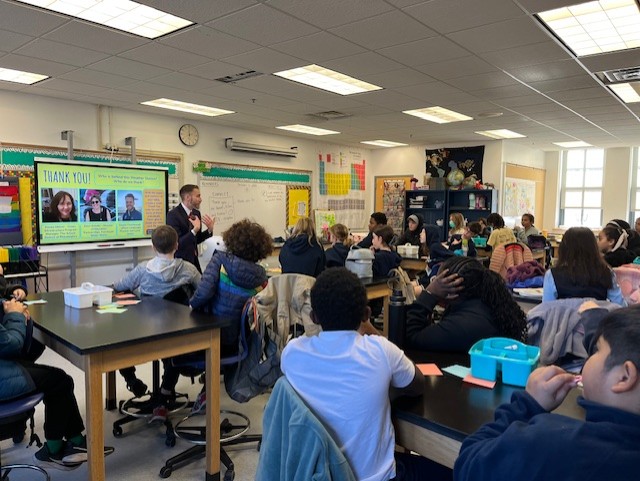Fairmount Water Works Interpretive Center
The Fairmount Water Works Interpretive Center opened in 2003 as the public education center of the Philadelphia Water Department. It is located in the old mill house of the Fairmount Water Works. The Interpretive Center is open to the public and often hosts school field trips. It is a hub for STEAM and environmental education, research, and community engagement. Locally based lessons empower students to become active participants in 21st-century solutions to urban water issues in their own communities.
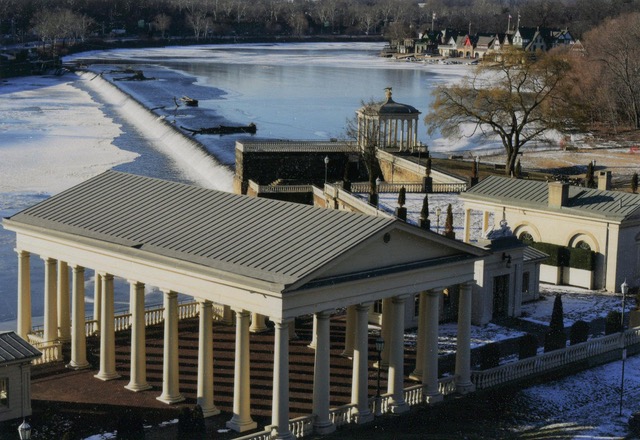
Floating Water Workshop
The fund is pursuing an exciting project to build a Floating Water Workshop at Penn’s Landing and, eventually, the site of the Fairmount Water Works. This project will connect the Delaware and Schuylkill Rivers directly with Philadelphia’s diverse communities.
The floating platform will bring visitors and students to the river to learn firsthand about the rivers surrounding them.
The design and engineering is to be completed in 2024 and the workshop is expected to open to the public at Penn’s Landing in 2025.
Freshwater Mussel Hatchery
Freshwater mussels do a lot for our ecosystem. They filter pollutants from the water, create a diverse habitat for fish, and stabilize the streambed. Located at the Fairmount Water Works Interpretive Center, the Freshwater Mussel Hatchery supports the study of these crucial parts of our ecosystem. The hope is to learn how to increase the population of mussels in the Schuylkill River and beyond.
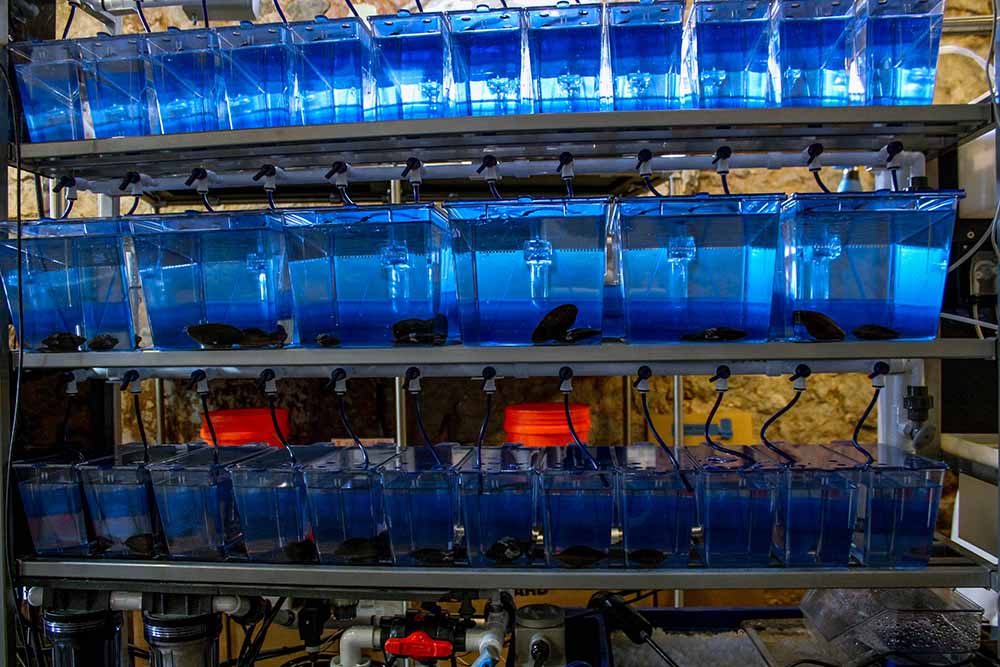

Preservation and climate resiliency of the Fairmount Water Works
Because of its proximity to the river, the Fairmount Water Works campus is at risk of severe damage from storms and flooding brought on by climate change. In 2021, Hurricane Ida brought record-breaking flooding to Philadelphia and near catastrophic damage to the historic pumping station and the Interpretive Center housed inside it.
As a result, the Fund for the Water Works partnered with Philadelphia’s Parks & Recreation and the Interpretive Center to explore climate mitigation strategies. The Fund worked with architect Mark B. Thompson & Associates and flood mitigation experts to identify flood mitigation treatments that would also meet national historic preservation requirements. Plans include installing flood resistant windows and doors, dry proofing select sections of the building, and elevating all utilities above flood levels. Our ultimate goal is the preservation of our iconic, historic landmark while activating our Fairmount Water Works campus.
Understanding the Urban Watershed Curriculum Project
The Understanding the Urban Watershed (UUW) Curriculum is currently being implemented in partnership with the School District of Philadelphia to increase knowledge and skills, and increase civic engagement to impact the school community, the neighborhood, the city, and the watershed. It is completely aligned with the new PA STEELS Standards, particularly the EL & S standards, and Meaningful Watershed Education Experiences (MWEEs). Together students and teachers discover the complexities and responsibilities associated with accessing, using, protecting, managing, cleaning up and returning water to our waterways to ensure a healthy ecosystem for all living things upon which their life depends.
Integration of the Understanding the Urban Watershed Curriculum in schools increases environmental literacy and sustainability education through deep and varied classroom and outdoor Learning Experiences for elementary, middle, and high school. It empowers both students and teachers while growing knowledge and skills, changing attitudes, and increasing civic engagement. This impacts the school community, the neighborhood, the city, and the watershed. In an ever-changing world, this curriculum content, associated activities, and lessons are authentic, local, and timely and address problem-based solutions for future impact.
Instructional materials are completely online and include student-facing instructional tools at resourcewater.org. Materials required to teach the curriculum are mostly provided and any additional materials are inexpensive or free. In addition, teacher practitioners are supported by a learning community of peers through ongoing online and in-person professional development workshops.
The project to create this unique Curriculum began in 2014. Since its inception, it was co-developed and piloted with classroom teachers, a characteristic that has played a major role in its successful implementation with classroom teachers. The expansion of this work is imperative to help the next generation thrive as they understand past, present, and future water management and the sustainability of a healthy environment.
In 2022, we introduced Mini-Units on various themes under the curriculum umbrella. One of those, called Sense.Able Schoolyards, focused on integrating local data from schoolyard sensing equipment with broader student understanding of the value of greening their local ecosystem. As part of this mini-unit, students will explore legacy environmental injustices and advocate for a more sustainable and equitable future for themselves. The project was made possible with support from Spark Therapeutics, as a pilot in West Philadelphia classrooms, 4th through 6th grade. Schools included in Phase 1 were Anderson Elementary and Penn Alexander, with three additional schools, Locke Elementary, Hamilton Elementary, and Science Leadership Academy Middle/Powell in Phase 2. In Spring 2025, support from Noresco made it possible to expand to two other schools outside of West Philadelphia, Hackett Elementary (Kensington) and Ellwood Elementary (East Oak Lane).
Several Learning experiences in the Mini-Unit explore Urban Heat Island, Data Makes Sense—an exploration of ambient conditions of a green schoolyard using sensing tools and human senses. and When It Rains, all about land and water management, past, present and future. All experiences are student-directed, inquiry based and evidence-based using installed schoolyard Ambient 5000 Model Weather stations as well as hand-held tools. Data from the Ambient Weather stations capture temperature, heat index, wind speed, precipitation, sunrise, sunset and moon phase, weather forecasting and particulates. Data is displayed on a user-friendly dashboard on a cell phone, tablet, or computer. Data can be downloaded, aggregated, and translated into spreadsheets and graphs over time. The schoolyard weather station is connected to the Ambient Weather Network platform which provides accurate data of hyperlocal conditions. This makes for easy comparisons amongst schools, neighborhoods activities across the city.
In keeping with the educational goals of the overarching curriculum, the Mini Units incorporate outdoor exploration in the local context and data-driven evidence they can use to advocate for a heathier living environment for Philadelphia, a critical part of the new STEELS Standards.
Science + Art = Stewardship + Fun. At each school students are part of the creative design and fabrication of a Weather Sensor housing unique to that school. Engaging students this way creates a sense of meaning, creativity, and ownership of the equipment as well as a feeling of joy when they see what they have created in their schoolyard
In May 2025, over 180 students and their teachers from our Sense.Able Schoolyard project gathered at the Fairmount Water Works Interpretive Center for an end of the year Summit. For one day they engaged in various hands-on activities and field experiences related to sensors and environmental literacy. They tested the pH of the river, made rain gauges, explored the ambient conditions along the boardwalk and learned more about urban heat island and green tools using our ready-row house models.
Other Mini-Units topics/themes include SEEING THE FOREST AND THE TREES (Trees and MWEEs (Meaningful Watershed Educational Experiences), STOP LITTER IN ITS TRACKS, IS IT REALLY FLUSHABLE? And WATER ACCESS AROUND THE GLOBE
